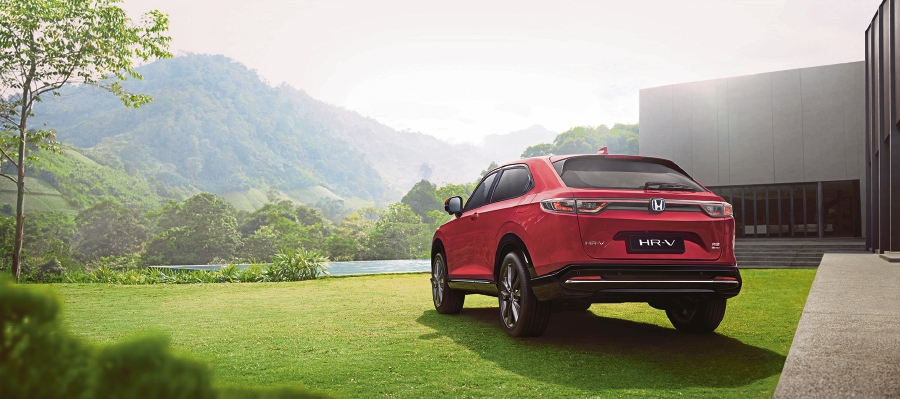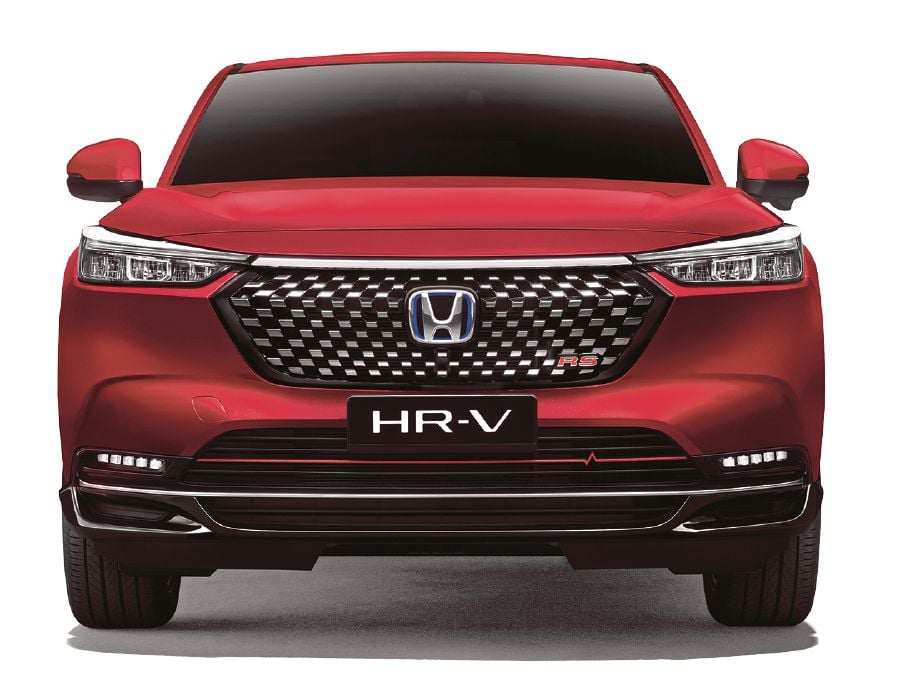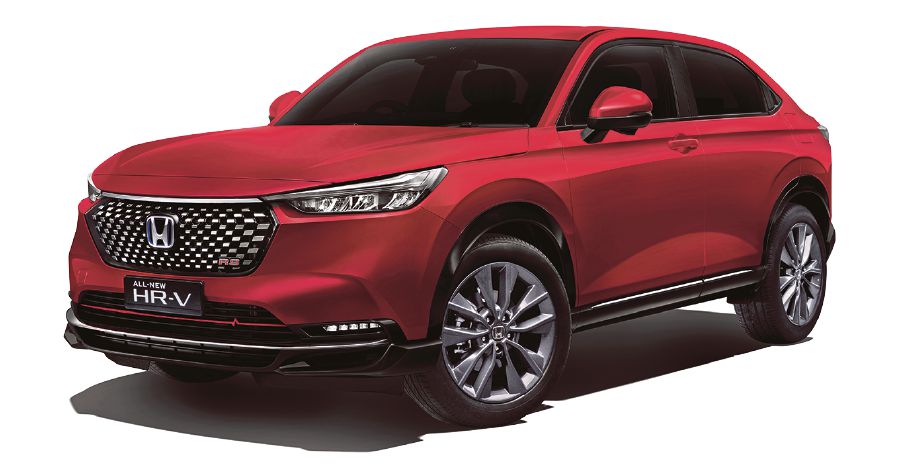AT the launch of the mid-size family sport utility vehicle (SUV), Honda Malaysia announced that it had received 20,000 orders for the HR-V.
The company opened the booking for the all-new SUV in the middle of last month, the day after the government announced that it would allow all orders placed before the end of the month to enjoy the sales tax exemption, provided the vehicles are registered before March 31 next year.
Some say that, more than anything else, created the rush that resulted in most carmakers staring at bloated order books and scratching their heads figuring out how they could fulfil the orders before the registration deadline.
When asked if the huge amount of bookings for the HR-V had ended up "cannibalising" orders for other Honda models, Honda Malaysia managing director and chief executive officer Hironobu Yoshimura said it was quite confident the impact was minimal as the target audiences were different.
While that is a perfectly acceptable stock answer, the reality is that SUVs are fast becoming more popular than sedans.
The fact that the new HR-V is offered in three different powertrains - the most in Honda Malaysia's line-up - is, perhaps, rather telling of its importance.
It offers the options of a 1.5-litre normally aspirated i-VTEC engine producing 121 PS, a 1.5litre turbo VTEC mill that cranks out a very respectable 181PS or a hybrid option of a 1.5-litre Atkinson cycle i-VTEC motor cranking out 107PS and a 131PS electric motor.
Similar to the system found in the City RS, the hybrid layout offers all-electric mode, hybrid mode or engine mode with power sent through what Honda calls an e-CVT transmission, which is basically a transfer case that matches engine power and electric power and seamlessly swap between the two.
All three powerplant options come with the three drive modes of Econ, Normal and Sport.
Clearly, Honda will not admit to it being a more important model than the legendary Civic, but the three-engine options are a huge statement of intent.
While the sales tax exemption was certainly a major motivation, the HR-V should enjoy significant praise for looking so good. There is little doubt that many people do buy cars based on looks; good-looking cars do sell better than boring cars.
Among the key changes to Honda's design vocabulary are surfaces that are calmer, details that are less fussy and a certain attention to proportions and not just packaging, which in the past has resulted in cars that are roomy but ungainly.
The front grille is fast becoming indispensable in the new look, the trapezoidal shape sits well with the other front elements as it offers a good interplay of angles to place lamps, badges, air intake, bumper creases and even foglamp and/or daytime running light details.
The trapezoidal grille logically insists on a slimmer headlamp design and the decision to make it fully LED meant the various elements are further broken down into smaller chunks, which create a more expressive pair of eyes for the car.
With light features playing an ever more important role in car design, the sequential front turn indicators also help to give a more premium feel.
The grille is now a collection of chrome plated stubs that make up a stylised chequerboard that is the only real adornment on the face and less is definitely more in this case.
The HR-V RS model gets 18-inch alloys that fill the arches well, although another inch would not hurt.
Apart from the wonderful work by the designers in coming up with a shape that is elegant, well balanced and harmonious from nearly all angles, Honda white coats also endowed it with an interior that felt more spacious than before, despite holding on to the same 2,610mm wheelbase.
The new car is 20mm wider and 35mm longer, which does help with the feeling of spaciousness in the cabin but the roominess is probably more the result of prioritising passenger space over the oily bits when designing the package.
Honda calls this "Man Maximum Machine Minimum". We call it a really good idea.
An important packaging change in this direction is the placement of the fuel tank under the front passenger seats. This clears up space under the rear seats that is then used to install the multi-utility seats.
There's even a hidden cargo box under the load floor to keep everything neat and tidy.
The auto locking doors and self-closing rear hatch are activated when the key moves away from the vehicle. This is a useful feature for those driving alone and have more than a few things to carry. The rear hatch also offers hands free opening.
These features are appearing for the first time in this class of vehicles.
In the cabin, Honda seems to be particularly proud of its air diffusion system, which is designed to spread cool air more gently around the cabin. Now, front passengers get to set their own temperature thanks to a dual-zone climate control system.
The eight-inch centre display are Apple CarPlay and Android Auto compatible but since Google has yet to officially launch the system in Malaysia, the feature will remain dormant until such a time.
The specifications list of the new HR-V is rather impressive, not least when it comes to driver assist where Honda has decided to pack it to the gunwale with electronic helpers, such as the hill descent control.
All HR-V variants get the Honda Sensing safety suite, which includes useful features such as lane keep assist, lane departure warning and lane departure mitigation.
The auto high beam feature is also a very much underrated safety feature.
The forward collision warning and mitigation systems are also important features for avoiding minor accidents, typically at low speeds, which make up more than half of all car accident insurance claims.
The most important feature of Honda Sensing is the stress-reducing adaptive cruise control system that takes the hassle out of creeping in a traffic congestion.
A new feature not yet seen in this class is Honda Connect, which connects the car with an app on a mobile device to keep the owner informed about car location, alarm activation, speed alert, geofencing alert, car health status and even a service reminder.
The all-new HR-V comes in five colour options of Ignite Red Metallic, Meteoroid Gray Metallic, Platinum White Pearl, Lunar Silver Metallic and Ruse Black Metallic.
The S variant is priced at RM114,800, the E version at RM129,800 and the V variant at RM134,800.
The Hybrid RS version is priced at RM 140,800.
Some may wonder why the RS is priced higher than the V variant when it is slightly slower and has less power. Well, the answer is that the RS offers a new kind of luxury where it will be quieter and uses less fuel if driven sensibly.
By the way, the RS consists of 22 per cent of total bookings while the non-turbo variant makes up 13 per cent. The remaining 65 per cent of customers want the most powerful turbo VTEC variant.
In contrast, the City RS makes up five per cent of all City bookings.
This may be an indication that Malaysians are becoming more ready to adopt cleaner automotive technology and are willing to pay for the privilege of being nice to Mother Earth.
Another explanation is that the HR-V sits at a higher market segment where buyers are less affected by variations in prices and are willing to spend more to be green.
Either way, it seems that Honda has hit a home run with the new HR-V.












